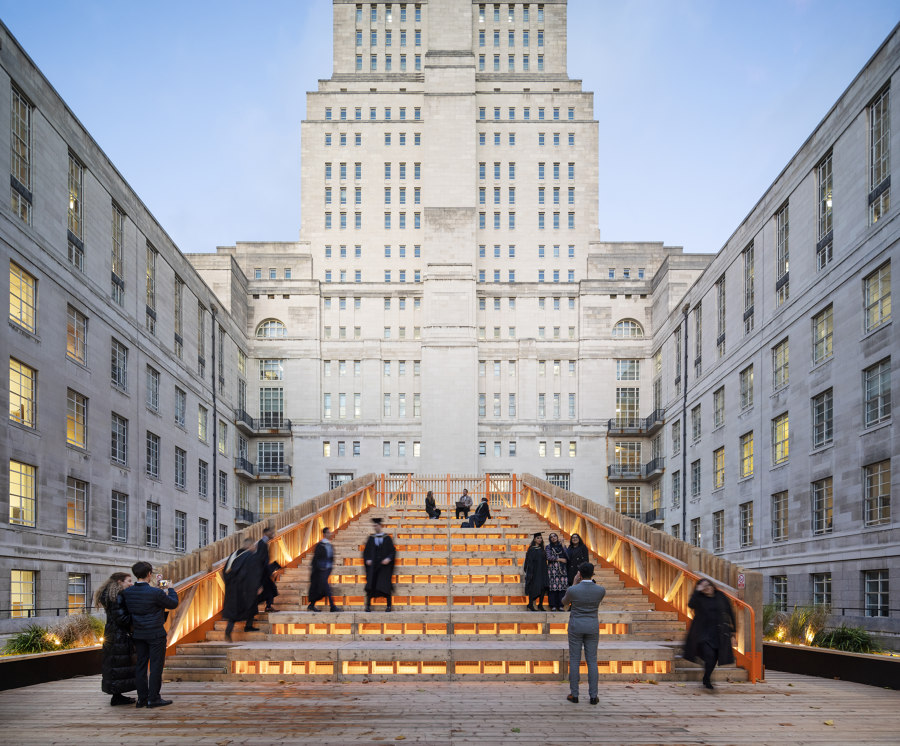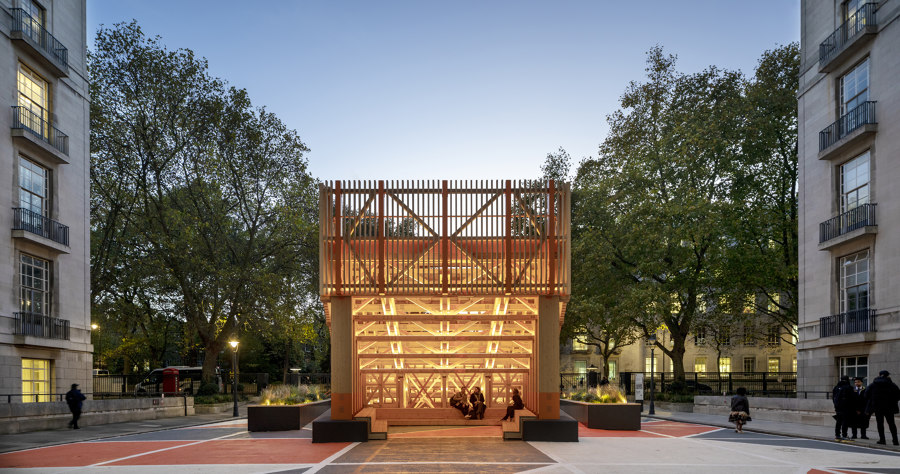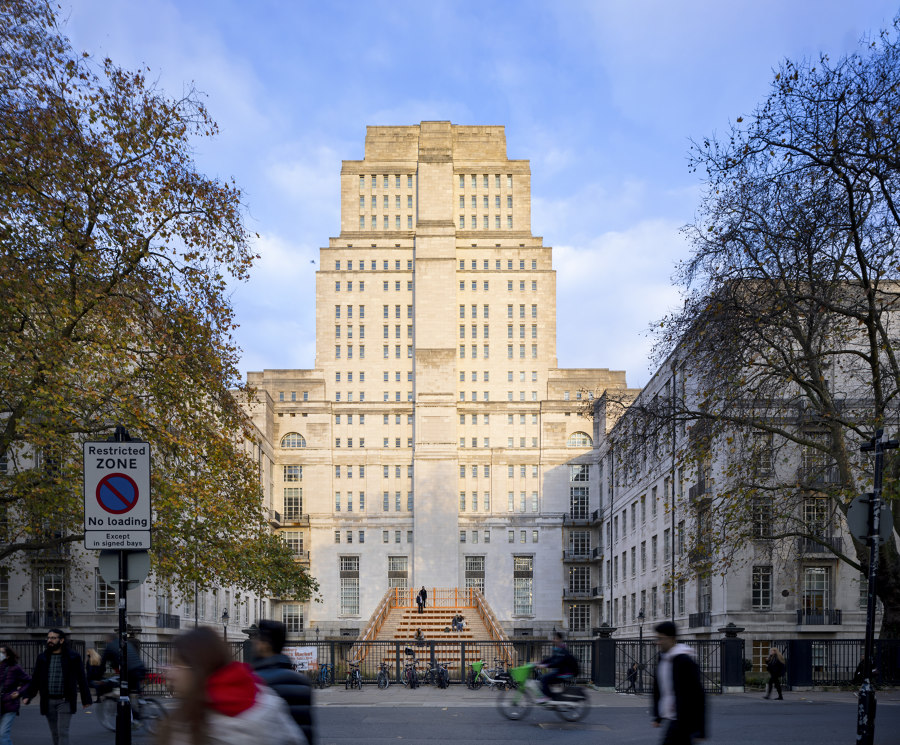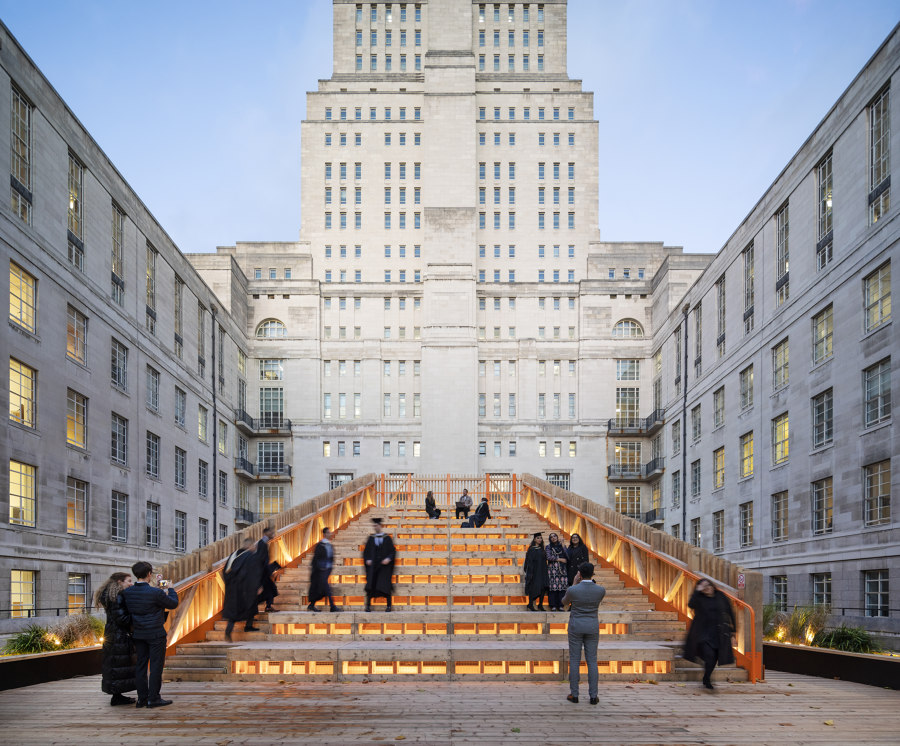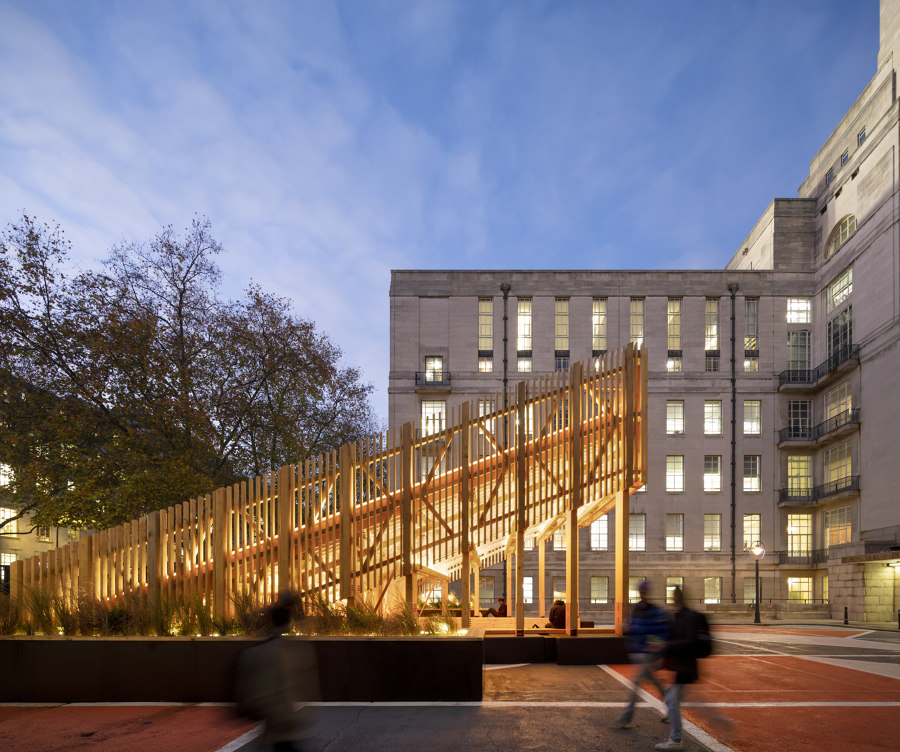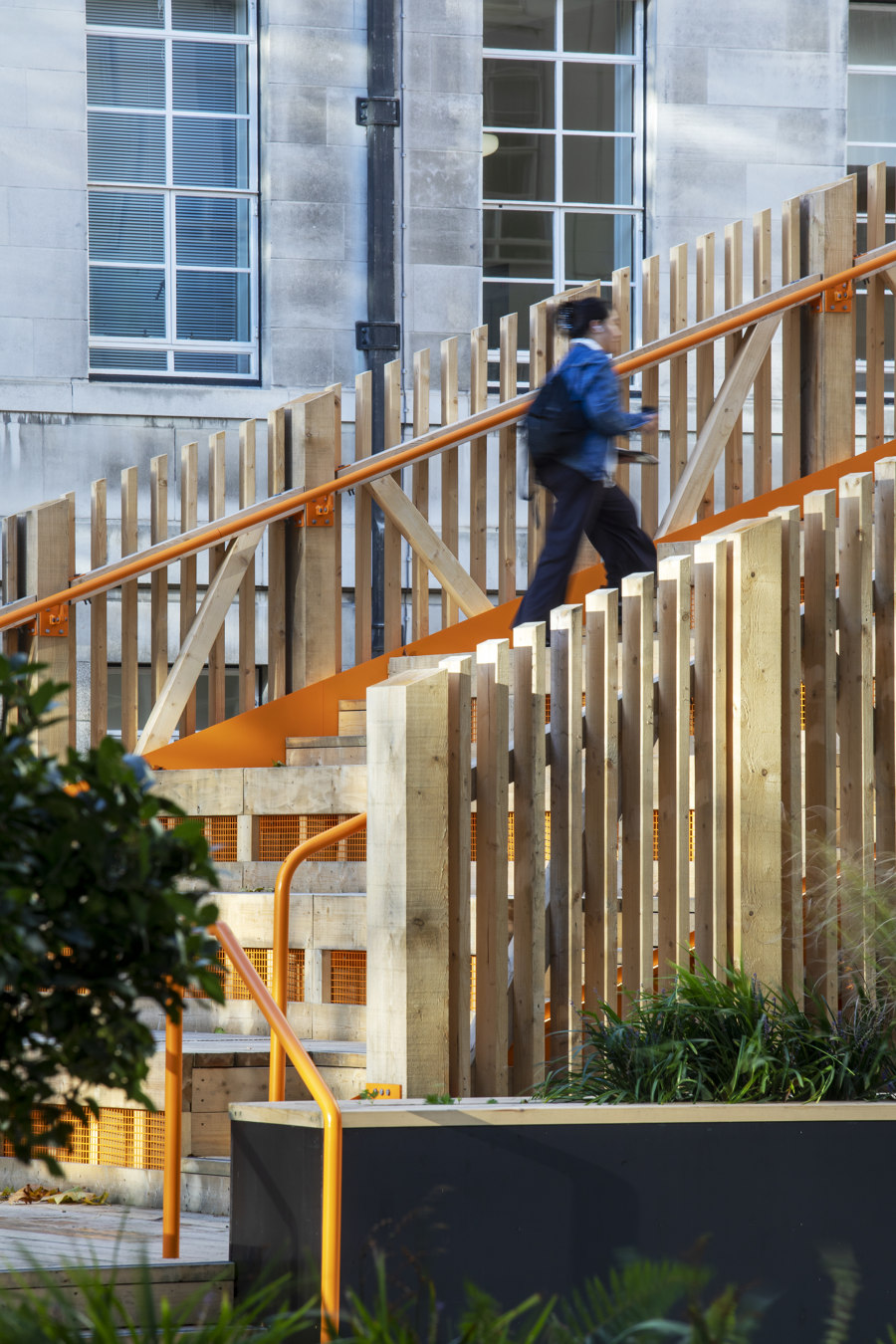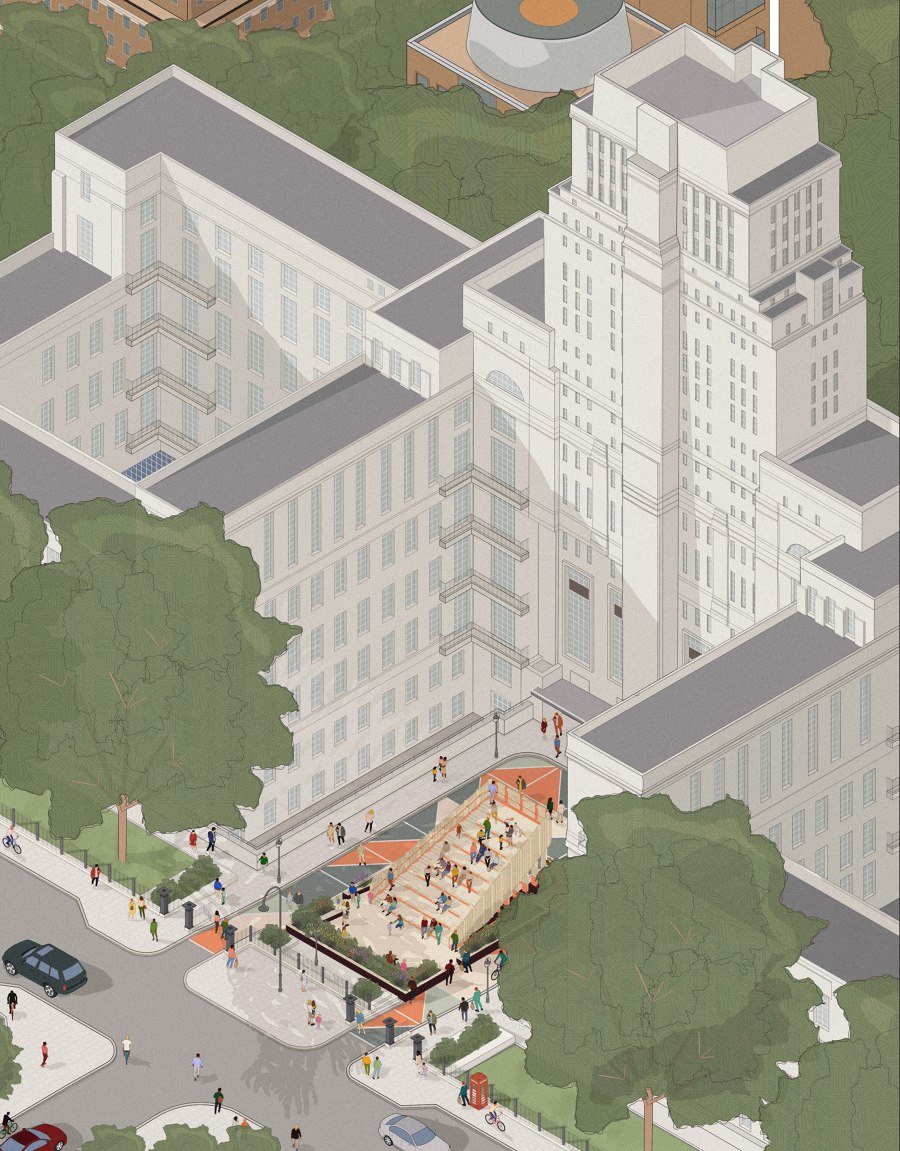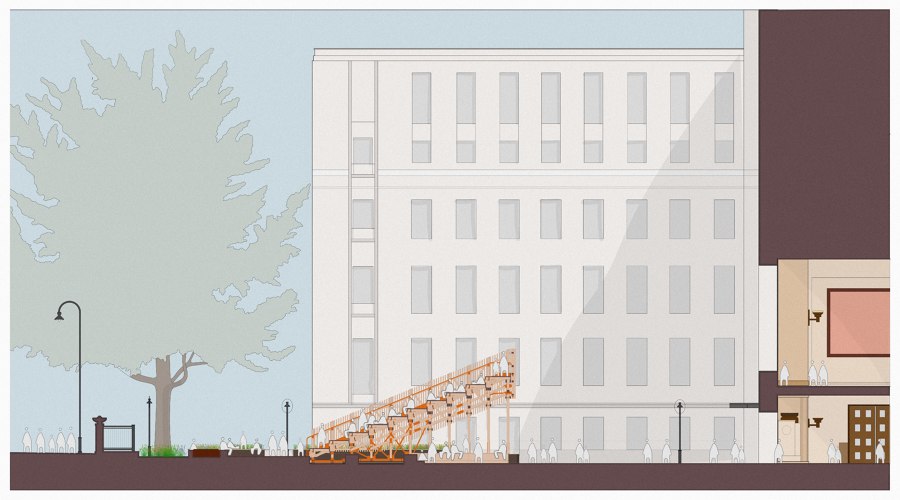BDP’s new architectural installation at Senate House has created a symbol of opportunity and a new canvas for students in the shadow of the University of London’s flagship building. The ‘Senate House Steps’ is an inspiring and social space to inhabit and a place that cohorts are now taking ownership of, within the heart of the University estate.
Senate House was designed in 1929 as the flagship building and home of the University of London. The architect, Charles Holden, described the monumental building as a ‘symbol of the permanence of the institution beyond any individual’. The pyramid form, use of load-bearing stone, and small-scale openings emphasize the stability of the building, creating a powerful and enduring image for the estate in which it resides.
BDP’s multidisciplinary team was asked to design a creative, social environment that transforms the car park on the west side of the central tower into a social space while highlighting and enhancing the horseshoe layout of Senate House, continuing its symmetrical language and encouraging activity. The structure would create a sense of belonging and become a place where students would want to stay and relax with their peers.
The result is a 7.3-meter-tall structure that is a symbol of the dynamism and potential of the students and of the wider university community. Introducing orange as the primary color signifies opportunity, and the form and flexibility of the Spanish-style steps deliver a sense of stage and presence. The dual aspect of space above and below the steps allows students to occupy the spaces on their terms, providing an extension of the University’s magnum opus and a new heart for social gatherings. It has become the landmark for all social events and students are using the pavilion as the main meeting place on campus, as a space for eating and relaxing and for celebrating successes together. The steps are carefully dimensioned to create a stage set for people; to sit, lie, talk, and connect.
The nature of the structure is inherently craft-like, there’s a careful logic to the series of components that fit together to create the steps. Much like the architect’s aspirations for the Senate House, the whole is greater than the sum of its parts, though every piece that contributes is celebrated in a bright orange palette.
The materials were used with sustainability and demountability in mind and the pavilion will stay in place, as a temporary structure, for a minimum of three years. It is designed using C24 softwood and European whitewood timber with concrete blocks used to plant the pavilion in place. Steel beams provide a level base for the timber structure, and steel plates are used for the connections and for easy disassembly with steel mesh screens and steel handrails incorporated. Additional timber and plywood planters are installed around the edge of the structure.
Design Team:
BDP Architects
